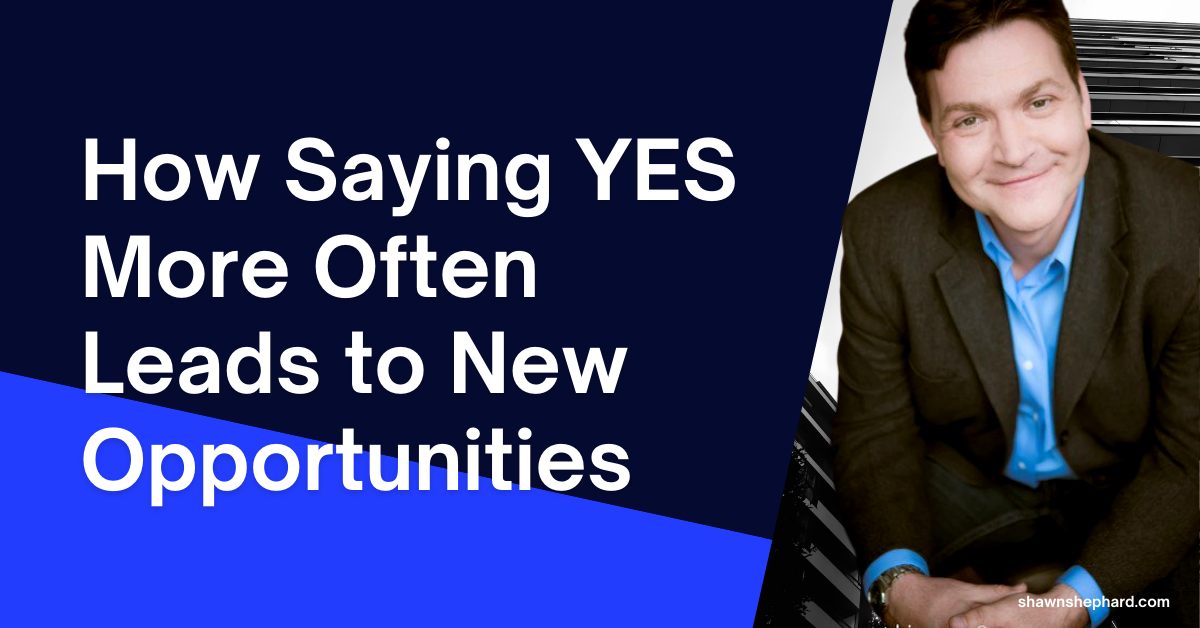
These are some of the first questions I ask whenever I start working with a new client. I like to ask them because it tells me a lot about whether a person has a fixed or a growth mindset. For those unfamiliar with psychologist Carol Dweck’s research on the power of mindsets, allow me to provide a quick rundown: Those who possess a ‘fixed mindset’, says Dweck, believe that their intelligence and talents are set in stone from birth. Those with a ‘growth mindset’, on the other hand, are more likely to believe they can develop their natural abilities with hard work and determination. They learn from their experiences to achieve their goals. In my old life as a corporate trainer, I ran into a lot of the former. Very few of the business executives I worked with had their own plan on how to improve themselves and their companies. Worse still, they weren’t willing to invest the time and money necessary to get started. It always shocked me when people would say, “I really want to do (fill in the blank), but my boss didn’t approve it.” Inevitably, I would reply: “Well, I guess you’ll have to pay for it yourself.” You would think I had suggested something truly offensive. It’s not easy for everyone to set aside money for their growth, and of course, I get that. But rest assured, your learning budget doesn’t need to be some monumental amount. When I started my entrepreneur journey, my budget might have been $30 for books and a library card. It wasn’t much, but it got me started. And that’s worth its weight in gold. Of course, all the money in the world won’t amount to anything if you aren’t willing to ask yourself the tough questions; questions like: do you know where you want to go? Do you know your blind spots? Do you want to improve? The individuals I work with now don’t shy away from these questions. They epitomize the ‘growth mindset.’ They see where they are now, but more importantly, they are always thinking about creating a future that is bigger than their present – both personally and professionally. Jim Kaloutas, owner of Kaloutas – one of the leading commercial painting, industrial flooring and fireproofing companies in New England – is a proud owner of a growth mindset. Considering his level of success, it would be very easy for him to think, ‘I know everything I need to know.’ Instead, he continually invests in himself. He has been an active participant in various strategic coaching and entrepreneurial organizations for more than a dozen years. He is always learning. He is always asking questions. On top of all that, he applies this same growth mindset to the people who work for him. He believes in coaching for every member of his team. He is very proud of the training program he facilitates, and he should be. Jim understands that when you invest in yourself and your team, everybody wins. That’s the thing about growth mindsets: they are the farthest thing from passive. By their very nature, they require upkeep. That’s why I recommend changing your environment from time to time. Thomas Leonard, one of the founders of the coaching industry, developed a tool called the ‘Nine Environments of You.’ His theory is that basically everything we do in life involves a unique environment. Our thoughts are an environment. Our relationships are an environment. Our health is an environment. Our finances are an environment. And so on. One of the core things I took away from Leonard’s theory is that the environments we put ourselves in either move us closer to, or further away from, our goals. This came into focus for me at a conference a number of years ago, where a speaker asked us to write down the three biggest professional successes of our lives to date. After we had all written down our answers, he asked: “How many of those successes required you to change your environment?” It was one of those moments that’s always stuck with me, because as I looked down at my paper, I realized all my biggest wins had occurred away from home. When I got uncomfortable and changed my surroundings, amazing things happened. Take the beginning of the pandemic, for example, when I lost about 85 percent of my business, seemingly overnight. I was a guy who went to boardrooms and shook hands. How on Earth was I going to make this work? Feeling distraught, I phoned up a friend – someone I have a ton of respect for, both personally and professionally – and I asked him what he thought about my predicament. His response, though I didn’t know it right away, would change everything. He said: “Shawn, the next little while is going to be full of unknowns, and it’s going to be tough financially, regardless of what you do – whether you spend your time complaining or whether you try something new.” Then he said: “Just focus on serving the clients that you absolutely love, and go from there.” When we got off the phone, I thought about my friend’s advice – and thought some more. ‘Couldn’t he have been a little more specific?’ I grumbled internally. I decided to start by taking out a pen and paper and writing down a list of those clients I absolutely love; the clients I’d love to have over to my house for dinner. When I was finished, I looked over each name on my list and thought: “how can I serve them today?” And that was when I decided to bring my pre-pandemic “Socials with Shawn” series to the wonderful world of Zoom. In the pre-pandemic days, “Socials with Shawn” was an in-person event that brought together my best clients and their friends. There was music, and food, and coaching, and fun. I had no idea how such an event would translate to the online world, but I… Continue Reading








